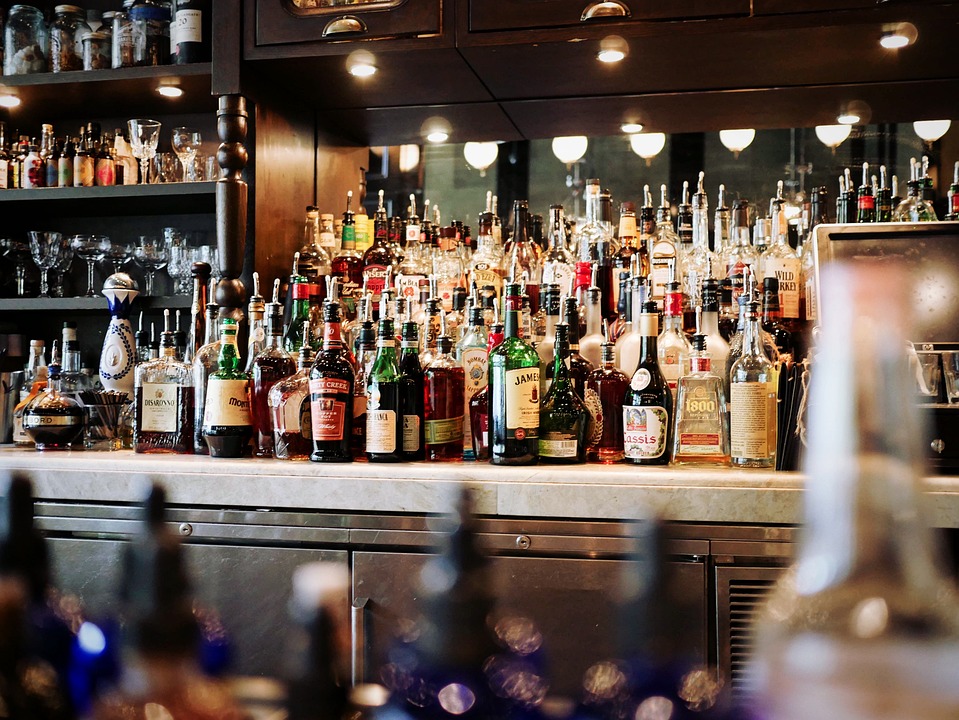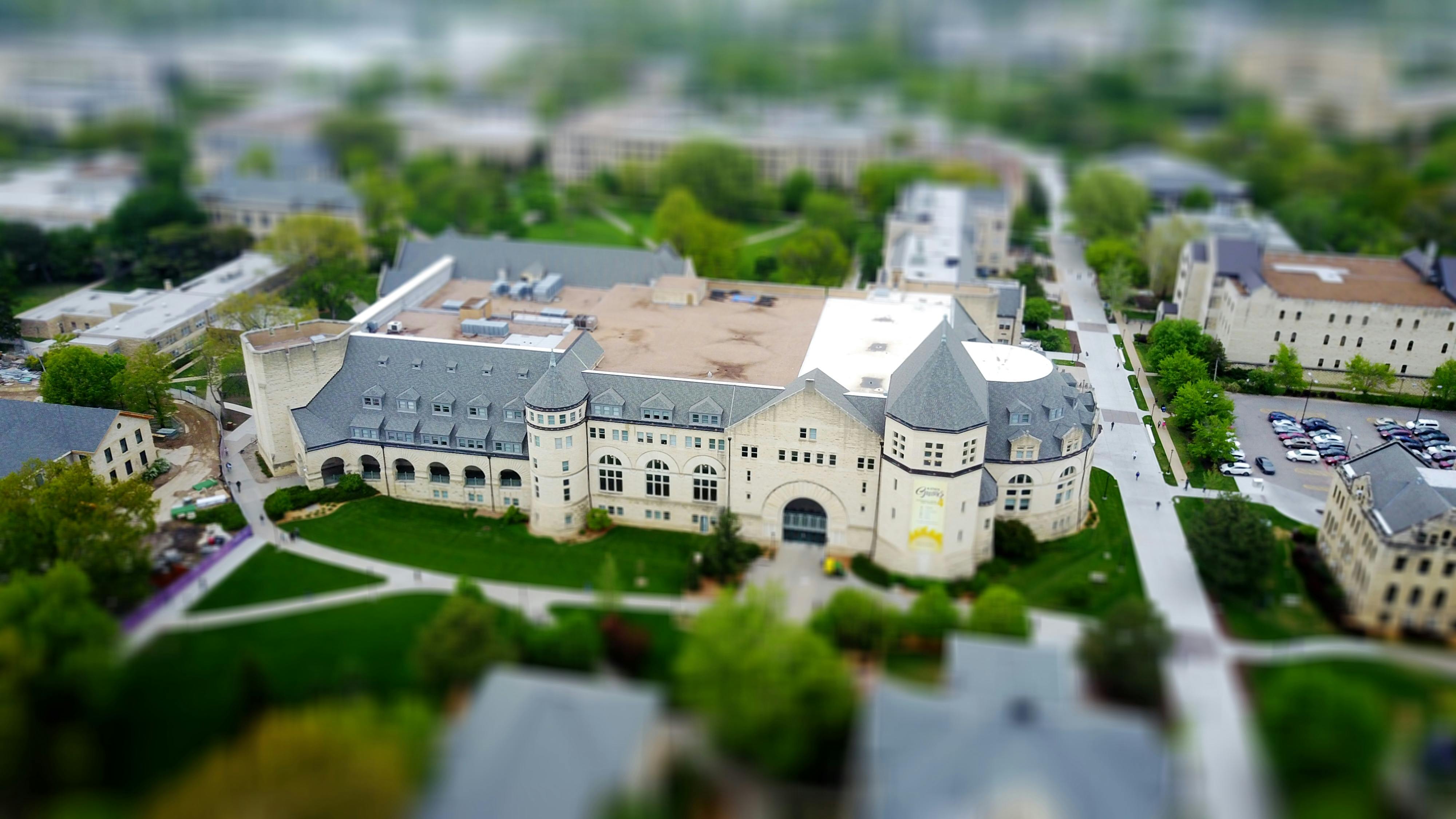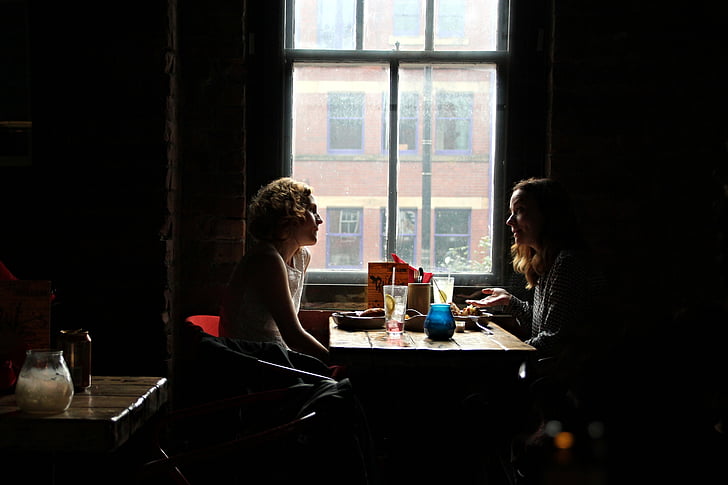Manchester’s soul lives in its contradictions. History whispers from every corner – in the iron skeletons of textile mills that birthed the Industrial Revolution, and in the handwritten ledgers of the world’s first free public library. Yet modern energy pulses through its legendary football grounds, where chants for United and City shake the stands. However, the true essence of this city lies in lesser-known facts on Manchester that even locals find surprising. Let’s explore 20 hidden threads in this urban tapestry – prepare to rethink everything you knew about England’s original modern metropolis.
TOP 20 Facts on Manchester
From Chinatown’s luminous dragon parades defying the northern gloom to university researchers decoding secrets of Egyptian mummies, the unexpected thrives here. Did you realize those picturesque canals once bankrolled a global cotton empire nicknamed “Cottonopolis”? Or that Gothic libraries double as film sets for crime thrillers like Peaky Blinders?
These interesting facts in Manchester reveal a city where tradition collides with innovation. Whether it’s worker bees symbolizing industrial grit or veganism taking root decades before it trended globally, Manchester’s stories bridge Victorian ambition with 21st-century reinvention.
Industrial Revolution and Technology Facts about Manchester
1. Birthplace of the Industrial Revolution
Manchester’s claim as the “Cradle of the Industrial Revolution” is cemented by its 18th-century cotton mills that reshaped global economies. The city’s Science and Industry Museum (MOSI), housed in a former railway station, preserves this legacy with operational steam engines and the world’s oldest surviving passenger railway warehouse. Visitors can stand beside a replica of Robert Stephenson’s Rocket locomotive or touch original Jacquard looms that mechanized textile production. What makes these facts about Manchester, England, remarkable is how industrial innovations—from canal networks to factory labour systems—were prototyped here. The term “Cottonopolis” once defined Manchester’s dominance, with raw cotton imports fueling 80% of Britain’s textile output. Today, MOSI’s interactive exhibits bridge the grit of coal-fired machinery to modern robotics, proving why the city remains a living laboratory of human progress.
2. The world's first inter-city railway
The 1830 Liverpool and Manchester Railway revolutionized transportation, replacing horse-drawn carts with George Stephenson’s steam-powered locomotives. Its inaugural run ended tragically with the death of MP William Huskisson, struck by the Rocket, yet it proved trains could reliably move goods and people at 30 mph. The original terminus at Liverpool Road now forms part of MOSI, where tracks and carriages are preserved. This railway didn’t just connect cities—it standardized timetables, signaling systems, and even third-class travel. Farmers suddenly accessed urban markets, and Manchester’s textiles reached ports faster. While often overshadowed by factories, this rail network was the Industrial Revolution’s circulatory system. Its legacy lives on in Manchester Piccadilly, today’s busiest station outside London.
3. The Birth of the Computer
Among groundbreaking facts on Manchester, the 1948 debut of the “Manchester Baby” (Small-Scale Experimental Machine) stands out. Built by Frederic C. Williams and Tom Kilburn at the University of Manchester, this room-sized computer ran the first stored program—a 17-instruction code to calculate prime numbers. Unlike earlier calculators, it used a cathode-ray tube for memory, pioneering digital technology. This invention laid the foundation for modern computing: by 1949, Alan Turing joined the team to develop software theory. A replica at the Manchester Museum of Science and Industry lets visitors witness binary code flickering on vintage screens. From this clunky prototype sprang innovations like packet switching and ARM processors, making Manchester a silent architect of the digital age.
4. 18th century textile mills still in operation
Quarry Bank Mill in Styal, a National Trust site, offers a visceral dive into Industrial Revolution realities. Since 1784, its waterwheel (later turbines) powered spinning frames that turned raw cotton into thread. The mill still operates daily—guides demonstrate how child laborers once risked limbs adjusting unguarded machines. The adjacent Apprentice House reveals grim dormitories where orphans worked 72-hour weeks. Yet this site also birthed worker welfare: owner Samuel Greg provided schooling and gardens, a paternalistic model later adopted nationwide. Surrounded by worker cottages and a lush valley, Quarry Bank contrasts technological ambition with human costs. It’s not just a museum but a time capsule where looms clatter as they did 240 years ago, making history tactile.
Sports and Football Culture Facts on Manchester, UK
5. Where the professional football league originated
Manchester’s football legacy extends far beyond its iconic clubs. In 1888, the world’s first professional football league was born at a meeting in Birmingham’s Royal Hotel—but it was Manchester’s teams, including Newton Heath (later Manchester United) and Ardwick AFC (now Manchester City), that became founding members. This revolutionary system standardized fixtures and player wages, ending the era of amateurism. Matches at Bank Street (United’s early ground) drew thousands, funded by factory owners seeking worker morale boosts. Today, Old Trafford’s Football Museum displays the original league rules penned by Aston Villa director William McGregor. Among lesser-known facts on Manchester, the league’s success hinged on northern industrial wealth: Manchester’s textile barons bankrolled teams, while railway networks ferried fans. This blueprint later shaped global sports leagues, from the NFL to the Premier League.
6. History of the relocation of the National Football Museum
The National Football Museum’s 2012 relocation to Manchester solidified the city’s status as football’s cultural capital. Originally housed in Preston—home to the Football League’s founding—it now occupies Urbis, a glass-curtained building near Victoria Station. Its archives hold gems like the 1863 handwritten Laws of the Game, Pelé’s 1970 World Cup jersey, and a ball from the 1966 final. One of the most revealing facts about Manchester, England is how the museum’s move paralleled the city’s regeneration: exhibits on women’s football and immigrant-led clubs (like Manchester Corinthians) reflect modern diversity. Interactive displays, such as penalty shootout simulators, attract families, while purists geek out over Stanley Matthews’ boots. By preserving everything from Victorian match tickets to Maradona’s “Hand of God” gloves, the museum proves football isn’t just a game here—it’s DNA.
Cultural and Historical Interesting Facts about Manchester
7. The world's first industrial estate site
Housed on the site of a Roman castle, the Manchester Museum of Science and Industry (MOSI) seamlessly blends Industrial Revolution steam engines, an 1830 railway station and ancient history. The museum retains the world’s first inter-city railway terminal, where visitors can touch a prototype Jenny spinner and experience the evolution from cotton weaving to digital technology. The site is a testament to Manchester’s facts on Manchester as the heart of the Industrial Revolution, with its network of canals and factory system that drove global industrialisation.111 The site is the first free public library in the UK.
8. Britain's first free public library
Opened in 1852, the Manchester Public Library pioneered the democratisation of knowledge, and its establishment led to the legislation of the Public Libraries Act, which made free reading a civil right. The collection ranges from first editions of antiquarian books to early industrial archives, such as rare books printed before 1500. As a key example of facts about Manchester, England, it remains an important hub for citizens’ access to knowledge, with an average of over a million visits per year.
9. The first statue of a woman outside of Queen Victoria
In 2019, Manchester unveiled the first statue of a woman other than Queen Victoria – feminist leader Emmeline Pankhurst. The statue, located in St Peter’s Square, commemorates her struggle for women’s suffrage and symbolises the city’s ongoing reflection on social inclusion. The move marks a significant shift in the cultural narrative [citation: user-supplied], after nearly two centuries in which the only remaining statue in public space was that of Queen Victoria.
10. Where the atom first split
In 1917, Ernest Rutherford achieved the first artificial splitting of the nucleus of an atom at the University of Manchester, ushering in a new era of nuclear physics. His laboratory is now a scientific heritage site and related manuscripts and equipment are on display in the John Rylands Library. This breakthrough established Manchester’s place in the history of science, but information on its exact site needs to be further substantiated.
11. Judicial cases of divorce over football
In 1997, a woman successfully applied for divorce on the grounds that her husband’s over-indulgence in Manchester United matches had led to the breakdown of her marriage, making it the first divorce case in the United Kingdom triggered by sports fanaticism. The court recognised the destructive effects of ‘football addiction’ on family relationships, and the case is included in the National Football Museum as an interesting footnote to the social culture of Facts on Manchester.
12. ‘Manchester’ is synonymous with textiles.
In Australian stores, bedding aisles are oddly labeled “Manchester”—a linguistic fossil from the 1800s. As the “Cottonopolis” of the Industrial Revolution, Manchester exported vast quantities of textiles to British colonies. Shipping crates marked “MANCHESTER” became synonymous with quality linens in Australia, where the term still refers to sheets and towels today. This fact about Manchester, England highlights its forgotten role in shaping global trade jargon, proving how industrial dominance can stitch itself into everyday language across oceans.
13. Birthplace of Rolls-Royce
One of the most iconic facts about Manchester, England, is its role as the birthplace of Rolls-Royce. In 1904, Charles Rolls, a luxury car dealer, and Henry Royce, an engineer, met over lunch at Manchester’s Midland Hotel. Their partnership aimed to create “the best cars in the world,” combining Rolls’ business acumen with Royce’s engineering brilliance. This meeting led to the formal establishment of Rolls-Royce Limited in 1906. The first car under their collaboration, the Silver Ghost (1907), set new standards for automotive excellence with its silent engine and unparalleled craftsmanship. Manchester’s industrial legacy provided the backdrop for this innovation, as Royce’s early workshops in the city laid the groundwork for the brand’s engineering ethos. Today, Rolls-Royce remains synonymous with luxury, but its origins in Manchester’s bustling early 20th-century industrial scene are a lesser-known yet vital part of the city’s history.
Social and Cultural Facts on Manchester
14. The 'Ugliest City'
According to a global survey conducted in 2022, Manchester was voted the ‘ugliest city’ by its residents, with only 11 per cent describing it as ‘beautiful’.1 This self-deprecating spirit is a reflection of the straightforward nature of the city’s people. Indeed, the city is home to many architectural gems, such as the neo-Gothic John Leylands Library and the industrial heritage landmark Museum of Science and Industry. This contrast is precisely the charm of Manchester – it doesn’t seek glitz and glamour but rather a spirit of pragmatism that has shaped the unique fabric of the city. As one citizen put it, ‘We may not have the romance of Paris, but we have the soul of the Industrial Revolution hidden in our brick walls.’ This paradox also serves as a reminder that facts on Manchester, England, often go beyond appearances and that the multifaceted nature of its history and culture needs to be explored in depth13.
15. Birthplace of the Vegetarian Movement
It is a little-known fact that Manchester was the birthplace of the British Vegetarian Society in the 19th century, which drove the institutionalisation of vegan culture worldwide. The movement was originally started by the labouring classes during the Industrial Revolution, who advocated a plant-based diet to improve health and reduce the cost of living. Today, the city remains at the forefront of vegan innovation, with one of the highest densities of vegan restaurants in the UK, such as V-Rev, famous for its ‘vegan fish and chips’, and this historical context is seen as one of the pioneering chapters of facts on Manchester, demonstrating the city’s leading role in social change. From bean stews in workers’ canteens to Michelin-recommended vegan-tasting menus, Manchester’s food culture has always been about sustainable living.
Discover Fun Facts about Manchester Face-to-Face
Immerse yourself in the soul of the city with interesting facts about Manchester up close and personal. uhomes.com simplifies the process of finding the ideal place to live with a 360° virtual tour to discover affordable student accommodation in Manchester near the university or cultural centre. Live where history meets modernity, just steps away from the heart of Manchester, so that your university life blends perfectly with the city’s culture.
More Manchester Facts
16. Rainy weather
One of the most fascinating fun facts on Manchester is its reputation as one of the UK’s rainiest cities. With an average of 143 rainy days annually and over 809 mm of precipitation, Manchester’s temperate maritime climate ensures frequent drizzles rather than heavy downpours. Winters are particularly damp, contributing to the local term “seasonal gloom,” where prolonged overcast skies and chilly humidity affect residents’ moods. Despite this, the mild year-round temperatures (averaging 8-20°C) make it a livable city. The persistent rain has even shaped cultural habits, from cosy pub culture to the iconic Manchester raincoat.
17. 'The Streets of New York' in the Marvel films
A standout among Manchester facts is its role as a cinematic double for New York. The Northern Quarter, with its red-brick warehouses and pre-war architecture, became a 1940s-era NYC backdrop for Captain America: The First Avenger. This bohemian district, known for indie shops and street art, retains an industrial charm that filmmakers covet. Marvel’s production team transformed its cobbled streets into wartime Brooklyn, while recent films like Morbius also utilized the area. Beyond movies, the Northern Quarter is a hub for music and art, hosting venues like Afflecks Palace—a labyrinth of vintage stores and quirky studios.
18. The library in 'Blood Gangsters'
Among the interesting facts about Manchester, UK, is the John Rylands Library, a Gothic Revival masterpiece featured in Peaky Blinders. Built-in 1900, this University of Manchester library boasts vaulted ceilings, stained-glass windows, and rare manuscripts like the Gutenberg Bible. Its atmospheric interiors, including the historic reading room, provided the perfect setting for the show’s tense negotiations. Beyond film, the library is a research treasure trove, housing texts dating back to 2000 BCE. Visitors can explore its labyrinthine corridors, where medieval aesthetics meet academic prestige.
19. The world's only 'mummy studies' programme.
A unique fact about Manchester is its pioneering Mummy Studies program at the University of Manchester. Launched in 1979, this interdisciplinary field combines archaeology, biomedicine, and 3D imaging to analyze ancient remains. Researchers use hospital-grade CT scanners to study diseases preserved in mummified tissues, revealing insights into historical epidemics like tuberculosis. The program also debunks myths—such as the discovery of “fake” animal mummies filled with reeds. Students even recreate mummification techniques using fruits, blending science with hands-on history.
20. The busy Manchester Airport
Rounding out these facts on Manchester is its bustling airport, the UK’s third-busiest. In 2023, it handled over 28 million passengers, with routes spanning 200+ destinations. A key hub for transatlantic flights (e.g., Virgin Atlantic’s Las Vegas route) and Asian carriers like Hainan Airlines, it drives the region’s economy. Recent expansions, including a £1.3 billion terminal upgrade, aim to boost capacity to 50 million passengers by 2030. Despite its size, 93% of travellers pass through security in under 10 minutes—a testament to its efficiency.
Conclusion
These facts on Manchester—from its cinematic landscapes to groundbreaking academic programs—highlight the city’s multifaceted identity. Among the many Manchester facts, its blend of industrial heritage, cultural innovation, and scientific prowess continues to captivate both residents and visitors. Whether exploring rainy streets or historic libraries, Manchester offers a dynamic tapestry of past and present, proving why it remains one of the UK’s most compelling cities.
FAQ
What is an interesting fact about Manchester?
Manchester is home to the world’s oldest surviving professional football league club, Notts County FC (founded in 1862), but the city’s own Manchester United and City later revolutionized global football culture. Its canal network, built during the Industrial Revolution, once transported more cotton than any other port.
What is Manchester famous for?
Manchester pioneered the Industrial Revolution, hosting the first passenger railway and splitting the atom. It’s globally renowned for rival football clubs (United and City), iconic bands like Oasis, and its role as a UNESCO City of Literature for radical publishing history.
How did Manchester get its name?
Derived from the Roman fort Mamucium (AD 79), meaning “breast-shaped hill” in Latin, referencing the area’s geography. The Anglo-Saxons later adapted it to Mameceaster, evolving into “Manchester” by the medieval era.
What is the best thing about Manchester?
Its gritty yet innovative spirit: Victorian mills transformed into cultural hubs like the Science and Industry Museum, while diverse neighbourhoods like Curry Mile and Northern Quarter blend global cuisine, street art, and live music seamlessly.
What was invented in Manchester?
Manchester pioneered groundbreaking inventions like the first stored-program computer (“Manchester Baby,” 1948), graphene (isolated in 2004), and atom-splitting (Ernest Rutherford, 1917). These innovations revolutionized computing, materials science, and nuclear physics, cementing the city’s role as a global hub for scientific breakthroughs.







